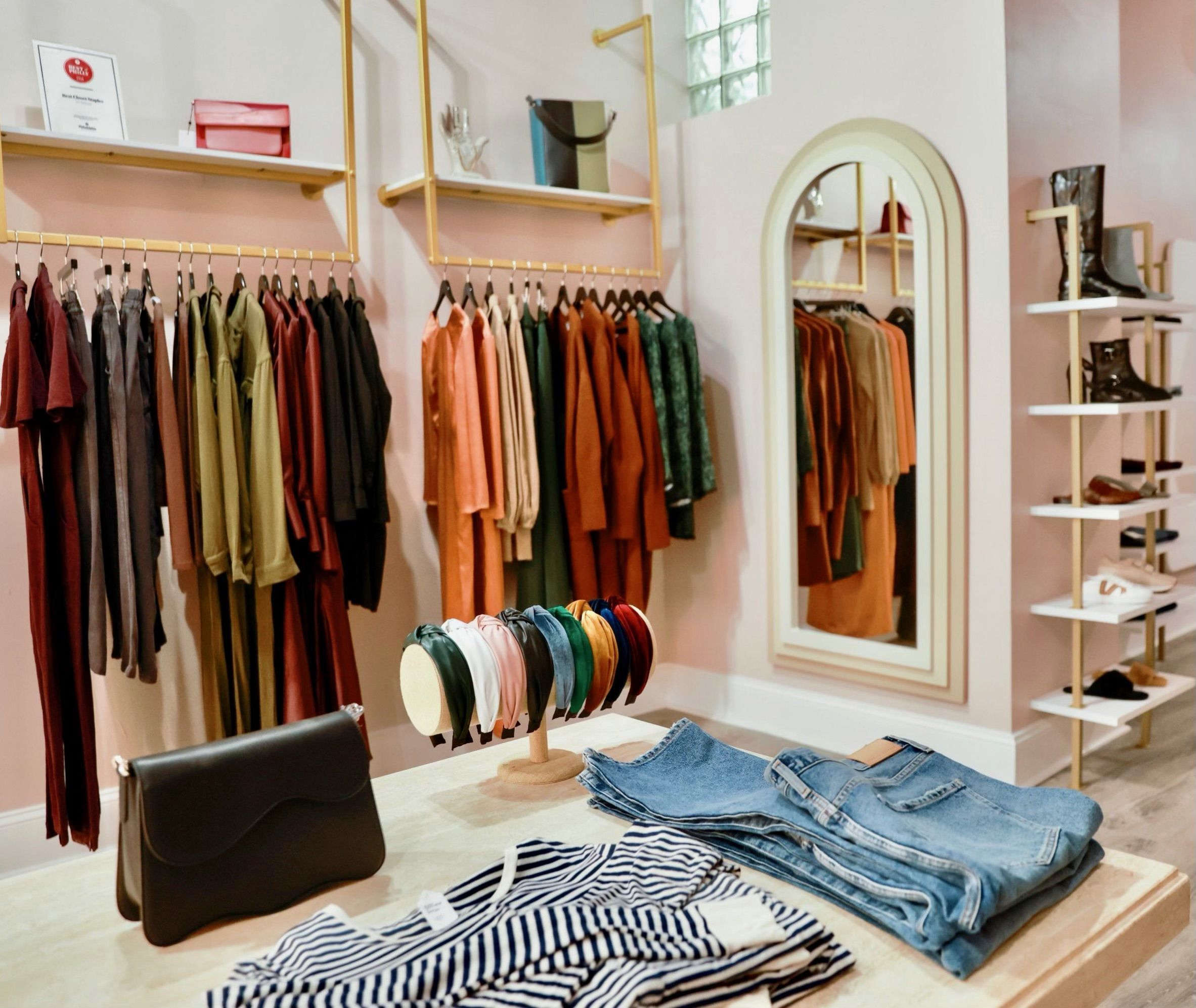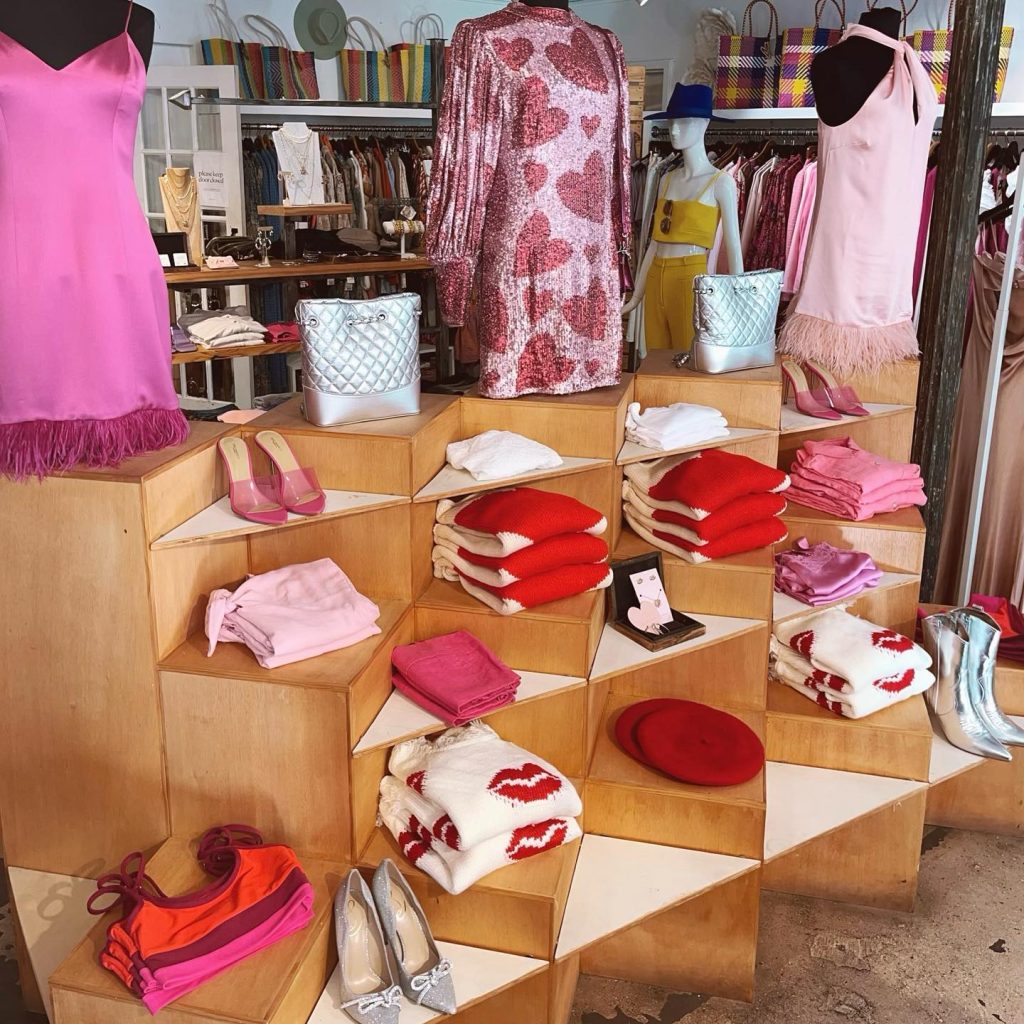A Beginner's Guide to Browsing the Boutique Fashion Scene
A Beginner's Guide to Browsing the Boutique Fashion Scene
Blog Article
Lasting Fashion: Just How Eco-Friendly Garments Is Forming the Future of Style
As the style market deals with enhancing scrutiny over its environmental impact, the surge of lasting style uses a promising alternative that straightens style with ecological obligation. boutique fashion. How does this motion truly influence the future trajectory of style, and what challenges exist ahead in its prevalent adoption?
Cutting-edge Sustainable Materials
As the garment industry grapples with its ecological influence, cutting-edge lasting products have become a critical remedy for reducing environmental footprints. Amongst one of the most appealing products are those originated from natural, eco-friendly sources, such as organic cotton, hemp, and bamboo. These products not just reduce reliance on nonrenewable fuel sources but likewise lessen hazardous chemical usage and water consumption. Organic cotton, as an example, uses dramatically much less water than traditional cotton and eliminates the demand for harmful chemicals, therefore protecting dirt health and biodiversity.
In addition to plant-based products, advancements in biofabrication have brought about the development of lab-grown fabrics. Mycelium natural leather, originated from mushroom roots, provides a versatile and eco-friendly alternative to pet leather. Its production leads to significantly reduced carbon discharges and water use, making it a much more sustainable option for designer seeking to line up with environment-friendly methods.
Recycled materials are also getting grip, with polyester made from recycled plastic bottles standing for a considerable advancement. This innovation not only draws away plastic waste from seas and landfills yet also minimizes energy usage compared to creating virgin polyester. With each other, these materials underscore the possibility for an extra lasting fashion industry, leading the means for ecologically aware style and production.
Eco-Conscious Manufacturing
Building on the developments in lasting products, the fashion business is likewise re-evaluating its production procedures to additionally lower ecological impact. Trick techniques consist of reducing water intake, reducing carbon exhausts, and removing harmful chemicals. By embracing closed-loop systems, makers aim to recycle water and energy effectively, substantially lessening waste. The integration of renewable resource resources, such as solar and wind power, into manufacturing facilities better curtails reliance on fossil gas.
One more important aspect is the decrease of poisonous chemicals typically made use of in coloring and finishing textiles. Eco-conscious producers are changing in the direction of plant-based dyes and waterless dyeing innovations, which not just secure regional environments but likewise boost worker safety and security. Advancements like digital printing reduce material waste and power usage, offering a cleaner alternative to standard methods.
With the development of blockchain innovation, firms can currently provide thorough understandings right into their supply chains, ensuring environmentally pleasant and honest methods at each action. As the demand for eco-conscious items expands, makers are compelled to introduce, making certain that the future of fashion is both lasting and elegant.
The Rise of Upcycling
Upcycling, a transformative method in sustainable style, involves creatively repurposing discarded materials right into brand-new, top quality items. This innovative technique not just lowers waste however also decreases the demand for basic materials, thereby minimizing the ecological effect of news apparel production. By reimagining and rebuilding existing things, developers and fashion brand names have the ability to instill originality right into their collections while promoting environmental obligation.

Moreover, the upcycling activity has actually encouraged local business and independent developers, More Help who usually lead in advancement due to their dexterity and creative thinking. By profiting from the plentiful accessibility of extra products, these entities add to a circular economy, demonstrating that style can be both trendy and lasting. With upcycling, the industry takes considerable strides in the direction of a more aware and responsible future.
Thrift Culture's Effect
The blossoming second hand society considerably reshapes the landscape of sustainable style, highlighting the relevance of conscious usage. This social change encourages customers to accept secondhand apparel, therefore decreasing the need for brand-new garment production and lessening ecological impact. Second hand shopping not only prolongs the lifecycle of garments however likewise reduces the carbon footprint connected with production, transporting, and dealing with clothing.
A crucial facet of thrift society is its democratization of fashion. By using a large range of designs from various periods at budget friendly rates, thrift stores make style easily accessible to a wider audience. This access fosters a sense of individuality and creativity, as consumers mix and match unique pieces to curate individualized closets without contributing to the rapid fashion cycle.
In addition, thrift society promotes circularity in fashion, lining up with the concepts of a circular economic situation. By recirculating garments, the cycle of waste is interrupted, and resources are preserved. This practice supports a change from a linear "take-make-dispose" design to a more lasting structure. As even more developers and customers welcome second hand society, the fashion business is urged to adapt, incorporating sustainable methods to fulfill the expanding need for eco-conscious alternatives.

Future Trends in vogue
Style's advancement is increasingly shaped by technical developments and sustainability-driven efforts. look here One prominent trend is the surge of electronic fashion, where virtual garments can be used in augmented reality environments, substantially reducing textile waste.
Moreover, the assimilation of blockchain technology supplies brand-new opportunities in transparency and traceability, enabling customers to verify the sustainability qualifications of their clothing. boutique fashion. This makes certain liability in supply chains and advertises honest sourcing methods. 3D printing is yet an additional technology that promises to revolutionize producing processes by making it possible for on-demand manufacturing, therefore minimizing excess supply and waste
As these technologies develop, they are positioned to transform the style landscape, combining style with sustainability. The future of fashion, consequently, exists in a smooth mix of innovation, innovation, and eco-friendly responsibility.
Final Thought
The change of the style market via sustainable practices indicates a pivotal shift in the direction of ecological liability. This advancement not just straightens fashion with environmental sustainability but likewise sets a criterion for future trends concentrated on responsibility and development.
As the style sector faces raising examination over its ecological influence, the rise of sustainable fashion uses an appealing alternative that lines up style with eco-friendly duty.As the fashion industry grapples with its environmental impact, ingenious sustainable materials have arised as a critical service for reducing eco-friendly footprints. Together, these products highlight the capacity for a more lasting style industry, paving the means for environmentally mindful style and manufacturing.
Structure on the advancements in lasting products, the style market is additionally re-evaluating its manufacturing processes to additionally decrease ecological influence. boutique fashion.Upcycling, a transformative practice in lasting fashion, involves creatively repurposing discarded materials into brand-new, premium products
Report this page